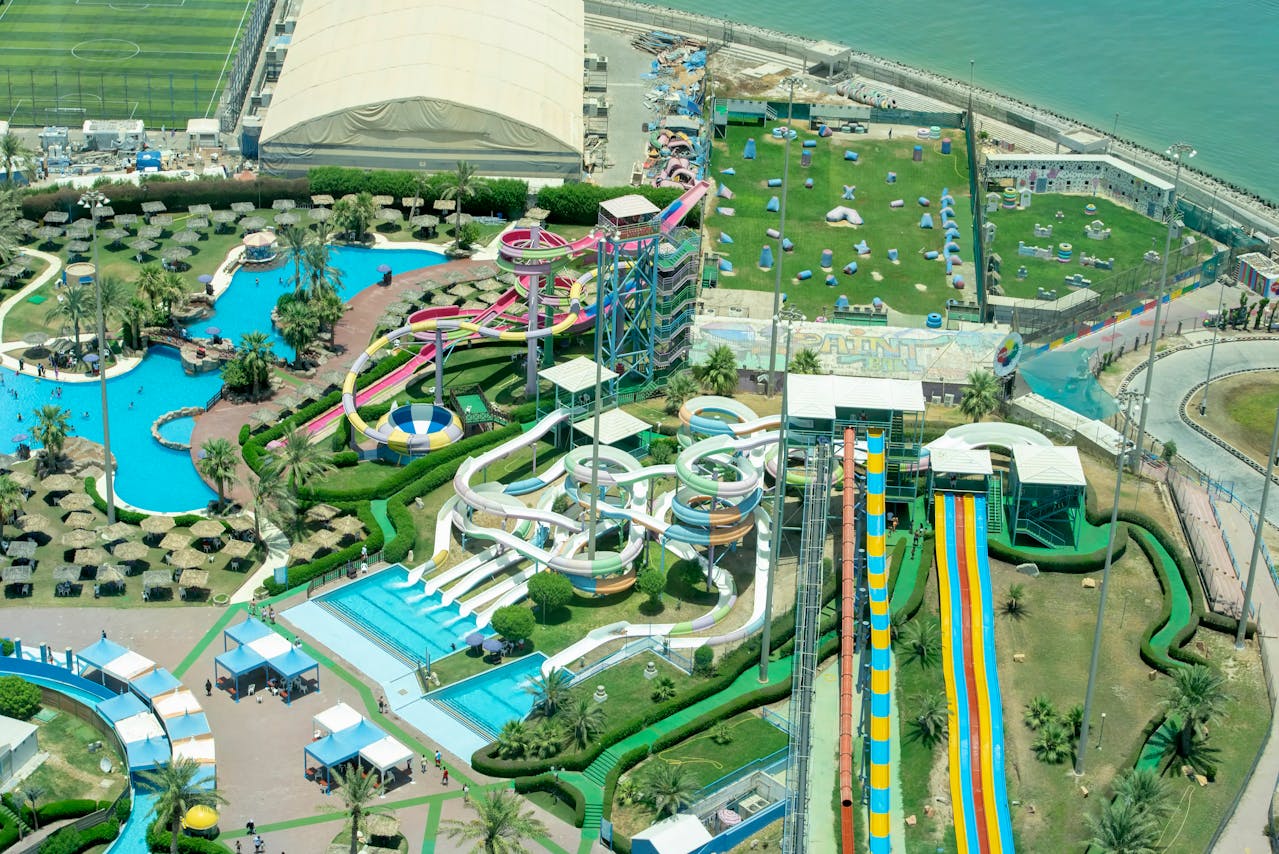PR Overview
- Using PR to Address Safety Concerns at Water Parks
- Building a Strong Foundation: Communicating Safety Standards
- Staff Training and Safety Expertise
- Incident Response and Crisis Communication
- Technology Integration in Safety Communication
- Measuring PR Impact on Safety Perception
- Creating Ongoing Safety Awareness
- Conclusion
Using PR to Address Safety Concerns at Water Parks
Water park safety remains a top priority for operators and guests alike, with recent industry data showing that proactive safety communication directly impacts visitor confidence and attendance. Research from 5W PR indicates that parks highlighting safety protocols in their marketing see a 25% increase in guest confidence levels. Public relations plays a vital role in building and maintaining trust by communicating safety measures, staff preparedness, and incident response protocols. For water park operators, mastering safety-focused PR strategies has become essential to protect both guests and business reputation in an industry where public perception significantly influences success.
Building a Strong Foundation: Communicating Safety Standards
Water parks must establish clear, consistent messaging about their safety protocols across all communication channels. A structured approach to safety communication starts with identifying key safety features, certifications, and protocols that differentiate the park. This information forms the basis of press releases, social media content, and marketing materials.
According to 5W PR’s research on water park PR strategies, successful safety communication campaigns typically follow a 12-week timeline. This timeline begins with early media outreach and continues through community engagement initiatives. The process includes regular updates about safety inspections, maintenance schedules, and compliance with industry standards.
Social media platforms serve as primary channels for sharing safety information. Parks can create engaging content that showcases daily safety checks, equipment maintenance, and water quality testing. Video content particularly resonates with audiences, offering behind-the-scenes glimpses of safety procedures in action.
Email marketing campaigns provide another effective channel for safety communication. Regular newsletters can update guests about safety improvements, new protocols, and seasonal safety preparations. These communications should maintain a balance between reassurance and excitement, avoiding overly technical language while still conveying professionalism and expertise.
Staff Training and Safety Expertise
Staff training represents a critical component of water park safety, and communicating these efforts effectively builds guest confidence. Industry data shows that nearly 80% of park operators prioritize comprehensive staff training programs as part of their safety culture.
PR teams should create content highlighting staff certification processes, ongoing training programs, and emergency response preparation. This can include:
- Video profiles of lifeguard training sessions
- Interviews with safety personnel about their expertise and daily responsibilities
- Documentation of emergency response drills
- Spotlights on staff members achieving advanced safety certifications
Regular media updates about staff training initiatives demonstrate the park’s commitment to continuous improvement in safety practices. These communications should emphasize both the frequency and depth of training programs, showing how staff members maintain readiness for various scenarios.
Incident Response and Crisis Communication
Despite thorough safety measures, incidents can occur at water parks. The response to these situations often determines their long-term impact on public trust and park reputation. Developing a comprehensive crisis communication plan before incidents occur ensures quick, appropriate responses when needed.
When addressing incidents, transparency proves crucial. Communications should acknowledge the situation promptly, outline immediate actions taken, and detail steps to prevent similar occurrences. This approach helps maintain trust and demonstrates commitment to guest safety.
Social media monitoring during incidents helps PR teams address public concerns quickly and accurately. Regular updates through official channels prevent speculation and misinformation from spreading. Parks should maintain consistent messaging across all platforms while adapting the tone and detail level to each channel’s audience.
Technology Integration in Safety Communication
Modern water parks increasingly use technology to enhance safety communication. Mobile apps and digital displays provide real-time updates about weather conditions, wait times, and safety announcements. These tools allow immediate communication of any safety-related changes or concerns.
Parks can leverage their mobile apps to:
- Send push notifications about safety updates
- Provide interactive maps showing first aid stations and emergency exits
- Offer easy access to safety rules and guidelines
- Enable quick reporting of safety concerns
Digital displays throughout the park can share safety reminders, weather updates, and emergency information. This immediate communication capability helps maintain guest confidence while demonstrating the park’s commitment to proactive safety management.
Measuring PR Impact on Safety Perception
Evaluating the effectiveness of safety-focused PR efforts requires tracking specific metrics and gathering guest feedback. Successful campaigns typically show measurable improvements in several key areas:
Guest satisfaction surveys specifically addressing safety perceptions provide valuable insights. Parks using coordinated PR campaigns for safety communication report opening day attendance increases of 30-45%, according to 5W PR’s case studies.
Online sentiment analysis helps track public perception of park safety over time. Social media engagement metrics, particularly on safety-related content, indicate how well safety messages resonate with audiences. Review monitoring provides additional feedback about guest safety experiences and concerns.
Creating Ongoing Safety Awareness
Maintaining consistent safety communication throughout the operating season keeps safety awareness high without causing alarm. Regular content calendars should include:
- Weekly safety tip posts on social media
- Monthly staff training highlights
- Seasonal safety preparation announcements
- Regular updates about maintenance and improvements
This steady stream of safety-related content maintains guest confidence while demonstrating ongoing commitment to safety standards. Parks should adjust their communication frequency based on audience engagement and seasonal factors.
Conclusion
Effective PR strategies for addressing water park safety concerns require a multi-faceted approach combining clear communication, staff training highlights, and robust incident response plans. Success depends on maintaining transparency while building guest confidence through consistent safety messaging.
Water park operators should focus on:
- Developing comprehensive safety communication plans
- Highlighting staff training and expertise
- Maintaining clear crisis communication protocols
- Leveraging technology for real-time safety updates
- Measuring and adapting PR efforts based on guest feedback
By implementing these strategies, water parks can build strong public trust while maintaining their reputation as safe, enjoyable destinations for families and thrill-seekers alike. Regular evaluation and adjustment of PR efforts ensure continued effectiveness in addressing evolving safety concerns and guest expectations.
Crisis Communications for Beauty Brands
When a beauty brand faces a crisis, the clock starts ticking immediately. Whether it's a...
How PR Shapes Trust in a Post-Hype Blockchain Era
The blockchain industry has weathered multiple storms—from spectacular exchange collapses to...
The Intersection of Corporate Communications and Cybersecurity Messaging
When a cybersecurity incident strikes, the technical breach is only half the battle. The other...




